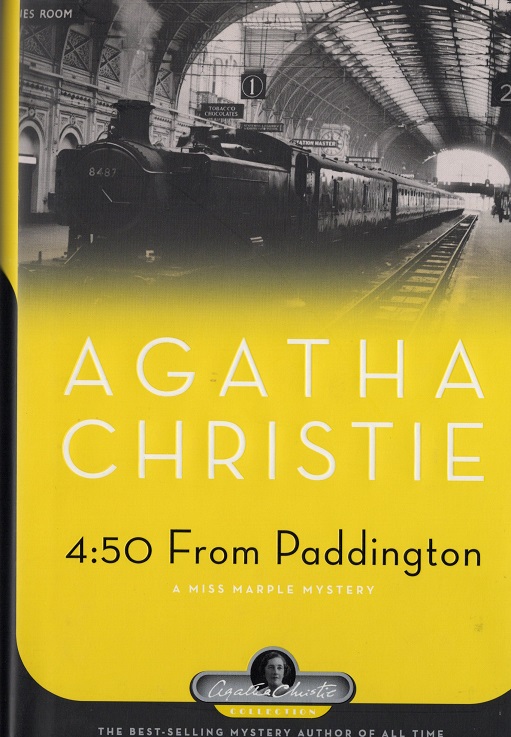
Murder on the Orient Express
Book Description
A murder on a luxurious train, trapped in a winter wonderland—chaos unfolds as a glamorous cast of characters becomes suspects on the Orient Express. When an American tycoon is found dead in his compartment, the stakes rise high with passengers eagerly whispering and glancing suspiciously at one another. Renowned detective Hercule Poirot must untangle a web of lies, secrets, and shattered alibis before the killer strikes again. With every clue, the tension thickens, relationships twist, and nothing is as it seems. Who can be trusted in a world where everyone has something to hide? Will justice prevail before the train reaches its destination?
Quick Book Summary
"Murder on the Orient Express" by Agatha Christie is a classic detective novel featuring the brilliant Belgian sleuth Hercule Poirot. Set aboard the luxurious Orient Express train, Poirot’s journey takes a sinister turn when American tycoon Samuel Ratchett is found murdered in his compartment, stabbed twelve times. As the train becomes snowbound and cut off from the outside world, Poirot takes charge of the investigation, methodically questioning the diverse group of passengers. With each interview, complex alibis unravel, exposing hidden connections and motives. Poirot faces an intricate puzzle of misleading evidence, personal secrets, and collective deception. The tension builds as time runs out and it becomes clear that almost every passenger had a reason to want Ratchett dead. Christie masterfully constructs a tale where the line between justice and vengeance is blurred, ultimately revealing a shocking resolution that challenges conventional notions of guilt and retribution.
Summary of Key Ideas
Table of Contents
The Art of Deception and Concealment
The story opens with Hercule Poirot boarding the renowned Orient Express in Istanbul, anticipating a restful journey. His plans are upended when an American named Samuel Ratchett approaches him for protection, fearing for his life. Poirot declines the request, uneasy about Ratchett’s demeanor. The following morning, Ratchett is discovered dead in his locked cabin, having suffered numerous stab wounds. As the train is immobilized by a snowdrift in the Balkans, Poirot is compelled to investigate under extraordinary circumstances, with all suspects confined together and no escape from scrutiny.
Revenge and Justice
Poirot begins a meticulous investigation among the thirteen other passengers, assisted by Dr. Constantine and the train’s director, M. Bouc. Interrogation of the suspects—ranging from a princess to a governess, a valet, and a count—uncovers an interwoven tapestry of alibis that often seem to corroborate each other, but Poirot’s keen eye senses contradictions. He discovers a burnt letter referencing the tragic Armstrong kidnapping and murder in America, a case infamous for the suffering it caused Daisy Armstrong’s family after Ratchett, whose real identity is Cassetti, orchestrated the crime.
Social Classes and Interconnectedness
With this connection, Poirot realizes almost every passenger had a personal tie to the Armstrong case, offering each a powerful motive for vengeance. Falsified passports, false identities, and staged evidence point to a concerted plan among the group. The suspects had carefully constructed their roles, relying on deceit and misdirection to mislead the investigation. Poirot’s intellectual rigor, combined with his understanding of human psychology, allows him to see through the deceptions and grasp the complexity of their collective guilt.
Poirot’s Analytical Methods
Facing the assembled suspects, Poirot presents two possible solutions: a lone killer from outside—or a conspiracy devised by all. He chooses to reveal the ingenious truth: the murder was an act of communal justice, orchestrated by twelve passengers in memory of Daisy Armstrong. Poirot’s revelation raises profound questions about morality, revenge, and whether true justice can exist outside the boundaries of law. Ultimately, those in authority choose to accept the first theory, allowing the murderers to go free, suggesting sometimes the heart outweighs the letter of the law.
The Nature of Truth
Christie crafts more than a conventional whodunit; she explores the capacity for deception, the pursuit of justice outside legal constraints, and the power of communal loyalty. Poirot’s deductive prowess is central, but the novel’s resonance lies in its examination of truth and motive. The ending forces readers to contemplate the ethics of vengeance, the fluidity of truth, and the complexities of guilt, making "Murder on the Orient Express" an enduring masterpiece of mystery fiction.
Download This Summary
Get a free PDF of this summary instantly — no email required.





